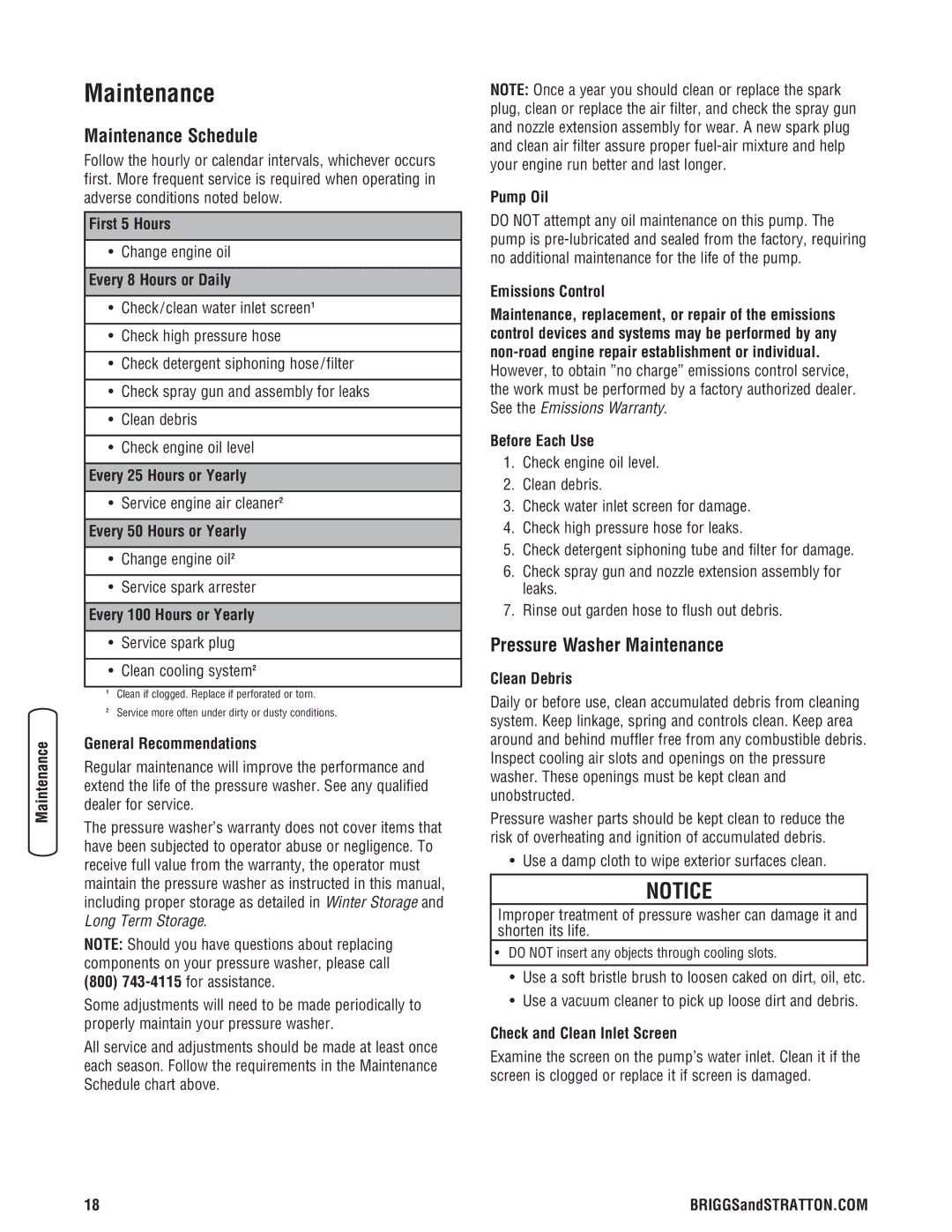2550 PSI specifications
The Briggs & Stratton 2550 PSI pressure washer is a powerful cleaning tool designed to tackle a variety of outdoor tasks with ease. With a maximum cleaning power of 2550 PSI, this machine is well-equipped for efficiently removing dirt, grime, and stubborn stains from surfaces such as driveways, patios, decks, and vehicles.One of the standout features of the Briggs & Stratton 2550 PSI pressure washer is its durable and reliable engine. Powered by a Briggs & Stratton 550 Series engine, it delivers consistent performance and dependable starts, allowing users to get to work without the frustration of engine failure. This engine is designed with an overhead valve (OHV) configuration, which increases efficiency while reducing emissions.
The pressure washer is also user-friendly, featuring a convenient push-button start system. This eliminates the need for pull cords, making it easier for anyone to get started quickly. The unit boasts an ergonomic design that includes a comfortable handle and the option for folding handles, making storage and transport simple.
In terms of functionality, the Briggs & Stratton 2550 PSI model is equipped with a 2.0-gallon per minute (GPM) water flow rate, allowing for effective cleaning without excessive water usage. The unit comes with a variety of nozzle options, providing different spray patterns to suit various tasks. The quick-connect nozzle system makes switching between nozzles easy and efficient.
Another key characteristic of this pressure washer is its rugged frame and all-terrain wheels, which ensure stability and maneuverability during operation. The wheels are designed to withstand various surfaces, allowing users to roll the machine over grass, gravel, or smooth pavement with ease.
Furthermore, the Briggs & Stratton 2550 PSI pressure washer features a built-in detergent tank that simplifies the process of applying soap while cleaning. This tank is easy to fill and ensures that users can tackle tougher cleaning jobs without the hassle of additional equipment.
With its combination of power, efficiency, and user-friendly design, the Briggs & Stratton 2550 PSI pressure washer stands out in the market as a reliable tool for homeowners and outdoor cleaning enthusiasts alike. Its blend of innovative features and practicality makes it an excellent choice for achieving professional-quality cleaning results.

